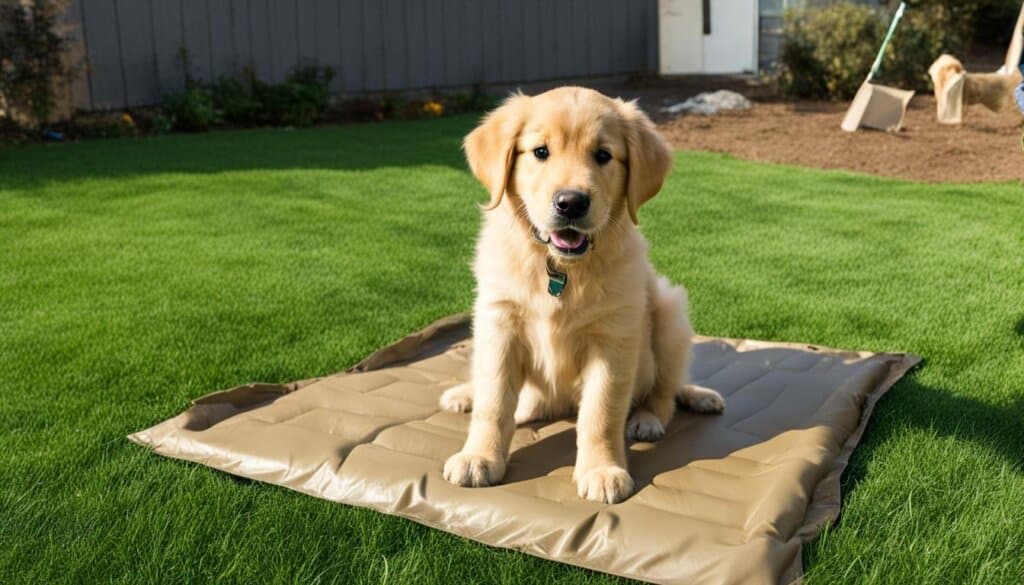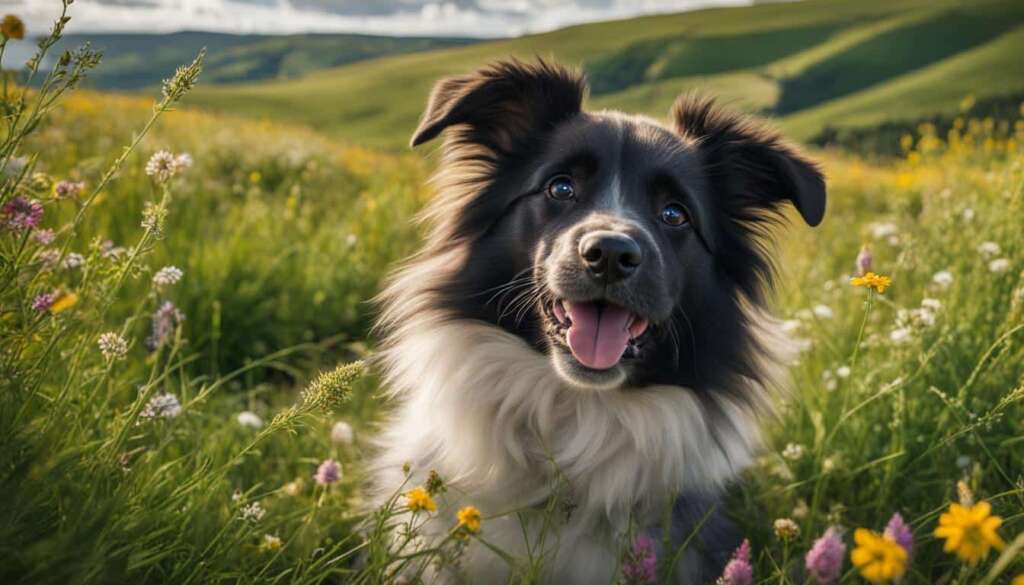Table of Contents
As a new puppy owner, it’s important to have a basic understanding of canine behavior and training. This guide provides valuable insights into puppy socialization, potty training, crate training, and the use of pheromones for comfort. By focusing on building a strong bond with your pup and providing structured training with positive reinforcement, you can ensure that your furry friend grows up to be a healthy and well-behaved dog.
In the following sections, we will dive deeper into each aspect of puppy training and offer practical tips and advice for successful implementation. Whether you are a first-time puppy owner or looking for a refresher course, this comprehensive guide will help you navigate through the early stages of puppyhood. Let’s get started!
The Importance of Socialization for Puppies
Socialization plays a crucial role in the development of a well-behaved and balanced dog. It involves exposing your puppy to a variety of people, animals, places, and situations during their critical socialization period. This period typically begins at 3 weeks old and continues until around 3 months old, where they are most receptive to new experiences. Proper socialization helps prevent behavior problems and fear-based aggression in the future.
One effective way to provide safe and controlled interactions for your puppy is by enrolling them in a puppy socialization class. These classes are specifically designed to expose puppies to different animals and people in a controlled environment. They offer an opportunity for your pup to learn how to interact appropriately with others while building confidence and positive associations.
A study conducted by the American Veterinary Society of Animal Behavior (AVSAB) found that puppies who participate in socialization classes are more likely to stay in their homes and have less behavioral issues compared to those who do not. This highlights the significance of early socialization for creating a well-adjusted and happy companion.
Proper puppy socialization sets the foundation for a lifetime of positive social behavior. It fosters crucial skills that enable your pup to navigate the world confidently and reduces the risk of fear or aggression later in life.
The Benefits of Puppy Socialization Classes
Here are some key benefits of enrolling your puppy in a socialization class:
| Benefits | Description |
|---|---|
| Safe and Controlled Environment | Puppy socialization classes provide a safe and controlled environment for your pup to interact with other puppies and people under the guidance of experienced trainers. |
| Positive Experiences | These classes expose your puppy to a wide range of stimuli in a positive and structured manner, helping them form positive associations with new experiences. |
| Confidence Building | Regular interactions with different animals and people in a socialization class boost your puppy’s confidence and help them become more resilient in unfamiliar situations. |
| Behavioral Development | Exposure to various social situations allows your pup to learn appropriate social behavior, including proper greeting techniques and how to play nicely with other dogs. |
| Training Opportunities | Socialization classes often incorporate basic obedience training, providing valuable opportunities for your puppy to learn and practice commands in a distracting but supportive environment. |
By enrolling your puppy in a socialization class, you are investing in their future well-being and ensuring they grow up to be a confident and social dog.
Basic Potty Training Tips for New Puppy Owners
House soiling is a common complaint among pet owners, so implementing a potty training protocol is essential. Puppies have limited bladder control, and as a rule of thumb, they can “hold it” for no longer than one hour per month of age, up to a maximum of 10 hours.
The key to successful potty training is supervision and consistency. Never leave your puppy unsupervised during the training period and take them outside every hour to their designated toilet area. By establishing a routine, your puppy will learn where and when to eliminate. Remember, accidents are to be expected, especially during the early stages of training. Stay patient and persistent.
Avoid punishing your pup for accidents, as it can lead to fear and make the training process more difficult. Instead, reward them for eliminating in the appropriate place to reinforce good behavior. Positive reinforcement can include treats, praise, or playtime. Your puppy will quickly associate these rewards with potty training success.
Supervision and Consistency
Supervision is crucial during potty training. Keep a close eye on your puppy’s behavior, especially after meals, playtime, or naps. Be proactive in taking them outside to their designated potty area before accidents occur. This level of supervision prevents indoor accidents and reinforces the desired outdoor elimination behavior.
Establish a Potty Training Routine
A consistent routine is key to successful potty training. Take your puppy outside to their designated toilet area at regular intervals throughout the day, including after waking up, eating, drinking, playing, and before bedtime. Use a verbal cue, such as “go potty,” to associate the act of eliminating with a specific command.
They should always be supervised during these bathroom breaks to ensure they are eliminating in the appropriate location. If they eliminate, offer praise, rewards and additional playtime as positive reinforcement.
| Do’s | Don’ts |
|---|---|
|
|
Signs Your Puppy Needs to Go Potty
Understanding your puppy’s body language is essential in recognizing when they need to eliminate. Look for the following signs:
- Sniffing or scratching at the ground
- Restlessness or pacing
- Circling or whining
- Squatting or sniffing around in a specific area
If your puppy exhibits any of these signs, take them outside to their designated potty area immediately.

Crate Training as a Valuable Tool for Puppies
Crate training is a highly effective method to provide structure and security for your puppy. It offers numerous benefits that contribute to their overall well-being and development.
Preventing Inappropriate Elimination:
Crate training helps prevent accidents and inappropriate elimination inside the house. Puppies naturally have a denning instinct, and a crate mimics this natural den environment. By utilizing the crate for potty training, you can establish a routine and teach your pup to hold their bladder and bowels until taken outside.
Creating a Safe Space:
The crate serves as a safe haven for your puppy, where they can retreat and have quiet time when they need a break from excessive handling, play, or household activities. It provides them with a sense of security and helps prevent overstimulation, reducing the likelihood of behaviors such as biting or nipping.
Preventing Destructive Behaviors:
When left unsupervised, puppies may engage in destructive behaviors due to anxiety or boredom. Crate training prevents such behaviors by confining them to a secure space where they can’t damage furniture, chew on dangerous objects, or potentially injure themselves.
Teaching Independence and Preventing Separation Anxiety:
Proper crate training helps puppies develop independence and confidence. It simulates the feeling of being left alone, gradually increasing the time spent in the crate, which prepares them for longer periods without their owner’s presence. This gradual exposure can help prevent separation anxiety, where puppies may become distressed when separated from their owners.
It’s essential to remember that crate training should always be a positive experience. Never use the crate as a form of punishment, and ensure your puppy associates it with comfort and safety. Gradual introduction and positive reinforcement are key factors in successful crate training.
The Use of Pheromones for Puppy Comfort
Pheromones play a significant role in comforting puppies during their transition from their mother and littermates to a new environment. Adaptil, a pheromone diffuser, mimics the pheromones that a mother dog releases after giving birth, providing a sense of security and calmness for the puppy. It is available in the form of a collar, spray, or plug-in diffuser.
Using pheromones, particularly during the first night away from the mother, can help reduce the stress and anxiety that puppies may experience. It’s important to use genuine products, such as Adaptil, and place the plug-in diffuser near the crate to create a safe and comforting den area.
| Benefits of Pheromone Diffusers for Puppies |
|---|
| 1. Provides a sense of security and calmness |
| 2. Reduces stress and anxiety |
| 3. Helps puppies adapt to new environments |
| 4. Can aid in crate training and separation anxiety |
| 5. Creates a safe and comforting den area |
Puppies rely on their sense of smell to navigate and understand their surroundings. By using pheromones, you can provide a familiar and reassuring scent that mimics the presence of their mother, helping them adjust to their new home and alleviate any distress they may feel.
Adaptil – A Trusted Brand for Pheromone Diffusers
Adaptil is a leading brand that offers a range of pheromone products specifically designed for puppies and dogs. Their diffuser releases a synthetic copy of the dog-appeasing pheromone, creating a harmonious environment and promoting relaxation and well-being.
When using an Adaptil diffuser, ensure that it is placed in a well-ventilated area near the puppy’s crate or den. This allows the pheromones to disperse and effectively create a calming atmosphere throughout the space.
Using pheromones, such as Adaptil, is a gentle and natural way to support your puppy’s emotional well-being and help them adjust to their new surroundings.
By incorporating pheromone diffusers into your puppy’s routine, you can provide them with the comfort and reassurance they need during this critical stage of development.
Teaching Bite Inhibition to a Mouthy Pup
When it comes to puppies, exploring their environment and gathering information using their mouths is perfectly normal. However, it’s important to teach them bite inhibition and discourage excessive or painful biting behavior. By doing so, you can ensure that your pup grows into a well-mannered and safe companion.
Avoid engaging in aggressive play with your puppy that involves their mouth and your hands. Provide appropriate chew toys to redirect their chewing behavior.
Puppies under four months of age may exhibit some mouthiness as they explore their surroundings and go through the teething process. However, it’s essential to understand that any biting that is painful or excessive should not be rewarded. Encouraging gentle play and redirecting biting onto appropriate toys will help teach your puppy proper bite inhibition.
“Proper bite inhibition training is crucial for teaching your dog to control the force of their bite, preventing potential injuries in the future.”
Using Chew Toys for Redirecting
Chew toys are an excellent tool for redirecting your puppy’s biting behavior. When your pup starts nipping or biting, calmly remove your hand or limb from their reach and replace it with a suitable chew toy. This helps them learn that chewing on appropriate items is acceptable.
“By providing your puppy with a variety of chew toys, you can help alleviate their teething discomfort and redirect their focus from inappropriate biting.”
Be sure to offer a selection of toys with different textures, shapes, and sizes to keep your puppy engaged. It’s also important to note that puppies have different preferences, so experiment with different toys to find what your pup enjoys the most.
Consistency and Rewards
Consistency is key when teaching bite inhibition to your puppy. By consistently redirecting them to appropriate chewing options and avoiding any form of play that encourages biting, you’ll help them understand what behavior is acceptable.
“Remember, never punish your puppy for biting, as this can lead to fear or aggression.”
Instead, reward your puppy for engaging in gentle play and using their chew toys. Positive reinforcement with treats, praise, or a calm “good boy/girl” can be highly effective in encouraging desired behavior. This reinforces the message that appropriate play and chewing are rewarding.
Patient Guidance
Teaching bite inhibition takes time and patience. It’s essential to supervise your puppy during playtime and redirect their biting behavior whenever necessary. With consistent guidance and positive reinforcement, your pup will learn to control the force of their bite and develop appropriate mouthing behavior.
Remember, each puppy is different, and learning may take longer for some than others. Be patient and persistent, and don’t hesitate to seek professional advice or enroll in puppy training classes if needed.
| Benefits of Teaching Bite Inhibition | How to Teach Bite Inhibition |
|---|---|
| Prevents accidental injury to humans and other animals | Redirect biting to appropriate chew toys |
| Creates a well-mannered and safe companion | Consistently avoid aggressive play involving the mouth and hands |
| Decreases the risk of fear or aggression later in life | Use positive reinforcement to reward gentle play |
| Develops trust and strengthens the bond between you and your puppy | Provide patient guidance and supervision during playtime |
Training Milestones for Puppies at Different Growth Stages
As puppies grow, they go through different stages of development, and each stage presents unique training opportunities. It’s important to understand and focus on specific training milestones during each growth stage to ensure a well-behaved and obedient dog.
Between 8-16 weeks of age, puppies are in their socialization period. During this time, their primary training goals should include exposure to different environments, people, and animals. It’s important to introduce them to new experiences in a positive and controlled manner. Basic impulse control exercises, such as teaching them to sit, can also be introduced during this stage to establish a foundation for further training.
Around 6 months old, puppies should have progressed in their housetraining and learned polite play. They should be comfortable being left alone for short periods and responding to basic commands like recall. Continuing to develop impulse control is crucial during this growth stage. Consistency and positive reinforcement are key to reinforcing learned behaviors and preventing any regression.
By the time a puppy reaches one year old, they should have mastered basic commands like sit, stay, and come. This stage focuses on fine-tuning their training skills and reinforcing good behaviors. It’s essential to continue training and challenging them with more advanced commands to keep their minds engaged and their skills sharp.
Training your puppy from an early age is vital in building a strong foundation of trust and clear communication. Each growth stage presents unique training opportunities and milestones to achieve. By understanding and focusing on these milestones, you can help your puppy develop into a well-behaved and obedient companion.
FAQ
What is a puppy?
A puppy is a young dog that is typically less than one year old.
Why is socialization important for puppies?
Socialization is important for puppies as it helps them become well-behaved and balanced dogs. It involves exposing them to different people, animals, places, and situations, which helps prevent behavior problems and fear-based aggression.
Should I enroll my puppy in a puppy socialization class?
Yes, enrolling your puppy in a puppy socialization class is an effective way to provide them with safe and controlled interactions with other animals and people. Research shows that puppies who participate in socialization classes are more likely to stay in their homes than those who don’t.
How can I potty train my puppy?
The key to successful potty training is supervision and consistency. Never leave your puppy unsupervised during the training period and take them outside every hour to their designated toilet area. Avoid punishing your pup for accidents, as it can lead to fear and make the training process more difficult. Instead, reward them for eliminating in the appropriate place to reinforce good behavior.
What are the benefits of crate training for puppies?
Crate training provides numerous benefits for puppies, including preventing inappropriate elimination in the house, creating a safe space for them to escape excessive handling, and preventing destructive behaviors when you’re away. It also helps teach them independence and prevents separation anxiety.
How do I introduce my puppy to crate training?
Gradually introduce your puppy to the crate and make it a positive and comfortable space. Start by placing treats and toys inside the crate to encourage them to enter. Feed them meals inside the crate and gradually increase the time they spend inside. Never use the crate as a form of punishment and ensure it is large enough for your pup to sit, stand, turn around, and lie down comfortably.
Can pheromones help comfort my puppy?
Yes, pheromones can play a significant role in comforting puppies during their transition from their mother and littermates to a new environment. Adaptil, a pheromone diffuser, mimics the pheromones that a mother dog releases after giving birth, providing a sense of security and calmness for the puppy. It is available in the form of a collar, spray, or plug-in diffuser.
How can I teach bite inhibition to my puppy?
It’s crucial to teach bite inhibition to your puppy and discourage excessive or painful biting. Avoid engaging in aggressive play that involves their mouth and your hands. Provide appropriate chew toys to redirect their chewing behavior. Encourage gentle play and redirect biting onto appropriate toys. Puppies under four months of age may engage in some mouthiness, but any biting that is painful or excessive should not be rewarded.
What are the training milestones for puppies at different growth stages?
For puppies between 8-16 weeks, the primary goals are exposure to the environment and basic impulse control, such as teaching them to sit. At around 6 months, puppies should have learned polite play, be making progress with housetraining, be comfortable being alone for short periods, respond to the recall command, and continue developing impulse control. By one year old, puppies should have mastered basic behaviors like sit, stay, and come. Starting training early is important to build a strong foundation of trust and clear communication with your pup.












